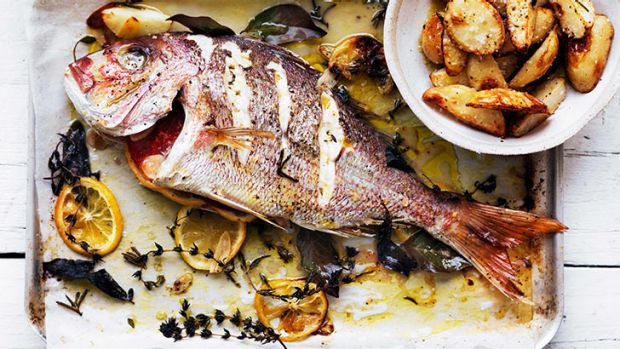The plastics in our seafood
On a beach in Sydney’s Botany Bay, Dave West from the Boomerang Alliance shows the small bits of plastic that get into our food chain.
Australian and Chinese researchers have shown for the first time that chemical pollutants accumulated on the surface of microbeads can pass into the fish that eat them.
With fish being a staple meat in the Australian diet, the researchers say products with the tiny plastics should be immediately removed from sale.
 RMIT researchers have shown microbeads can and do contaminate fish with toxic chemical pollutants. Photo: William Meppem
RMIT researchers have shown microbeads can and do contaminate fish with toxic chemical pollutants. Photo: William Meppem
“We know generally that if someone eats a fish, they risk eating any pollution that may be in the fish,” said Bradley Clarke, lead investigator and environmental scientist at RMIT University.
“Our next step is to determine the implications of our findings on microbeads for public health, working out the significance of this exposure pathway and precisely measuring how much pollution could be entering this human food chain.”
Microbeads are found in an array of skin and personal care products. Once used, billions of the plastic particles are washed into waterways, harming the environment and wildlife.
At least 11 major companies, including supermarket giants Woolworths and Coles, and personal care heavyweights Unilever and L’Oreal, have pledged to phase out microbeads in their products.
 Plastic microbeads isolated from face and body scrubs. Photo: RMIT University
Plastic microbeads isolated from face and body scrubs. Photo: RMIT University
The federal government has reached an agreement with all states to phase out microbeads by no later than July 2018.
In the controlled laboratory study, the researchers spiked microbeads they had isolated from popular face cleansers with “environmentally relevant” concentrations of the pollutant polybrominated diphenyl ethers (PBDEs) and fed them to Murray River rainbow fish.
 Dr Bradley Clarke from RMIT University says that “if someone eats a fish, they risk eating any pollution that may be in the fish”. Photo: RMIT University
Dr Bradley Clarke from RMIT University says that “if someone eats a fish, they risk eating any pollution that may be in the fish”. Photo: RMIT University
The study, published in the journal Environmental Science & Technology, revealed that up to 12.5 per cent of PBDEs on the microbeads leached into the tissue of the fish.
PBDEs are known to biomagnify up the food chain in marine animals. Eating fish and shellfish is linked to elevated levels of PBDEs in humans.
Such pollutants have been linked to neurological health problems, impaired immune function and fertility problems.
“We shouldn’t have to wait one or two years for these products to be banned, because in that time, billions more microbeads will be released into the environment,” said Dr Clarke.
“It would be nice to see an immediate ban, and the companies investing money into remediation costs. Microbeads should never have been in products in the first place.”
In November 2014, Fairfax Media reported how the tiny plastic beads used in scrubs and exfoliants were accumulating in fish in Sydney Harbour.
At Middle Harbour, scientists found 60-100 particles of plastic micro debris in 100 millilitres of sediment – among the highest levels in the world.
A Do Something campaign led to companies promising to phase out the microbeads.
In 2015, the United States’ Senate passed legislation to phase out the use of microbeads in cosmetics after finding they were detrimental to fish and other aquatic wildlife.
The Senate decision was part of changes to wider chemical safety laws that seek to protect consumers from an array of dangerous chemicals in everyday products.
